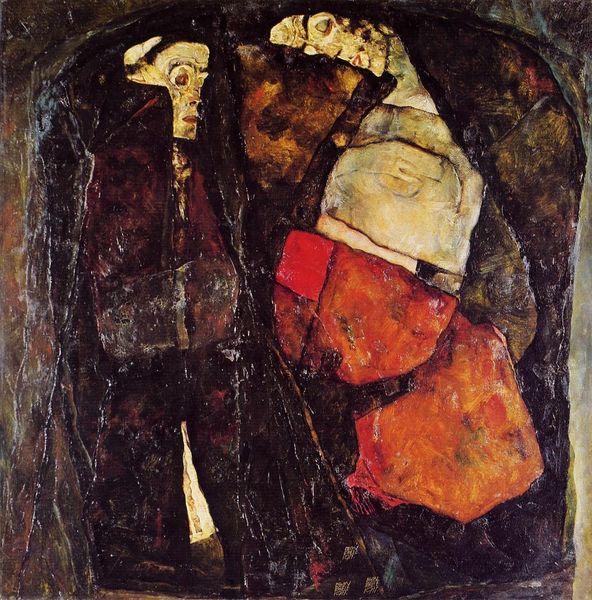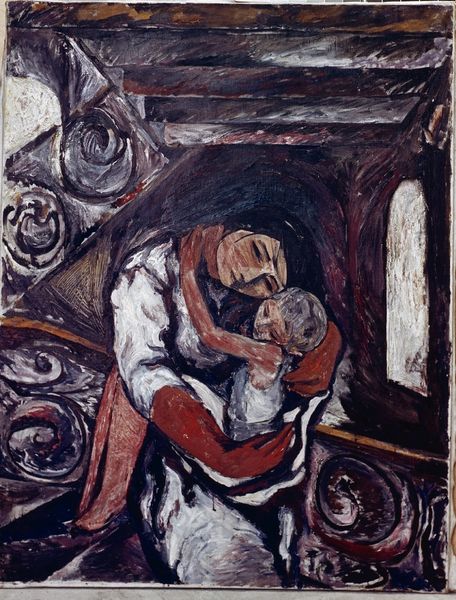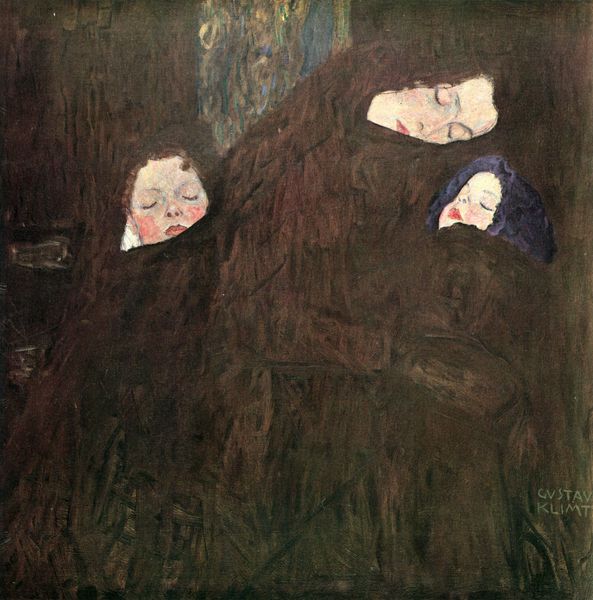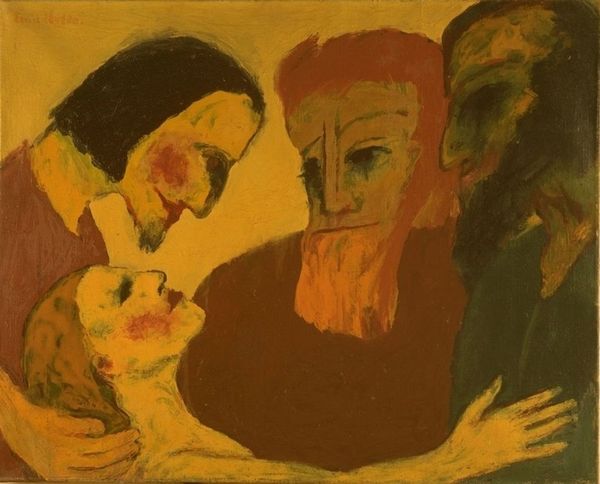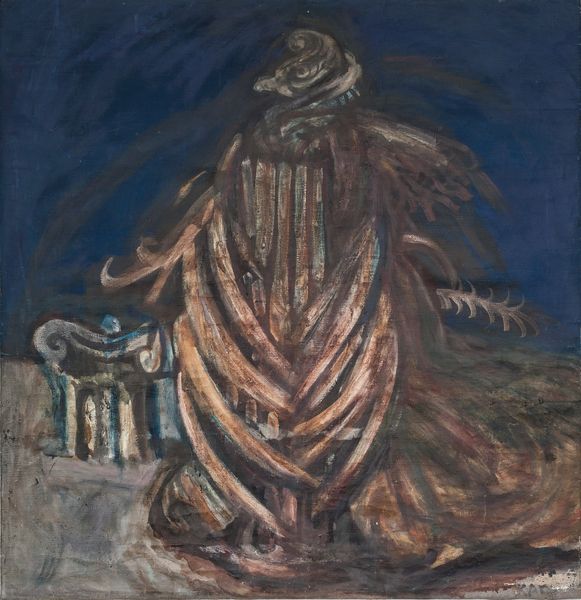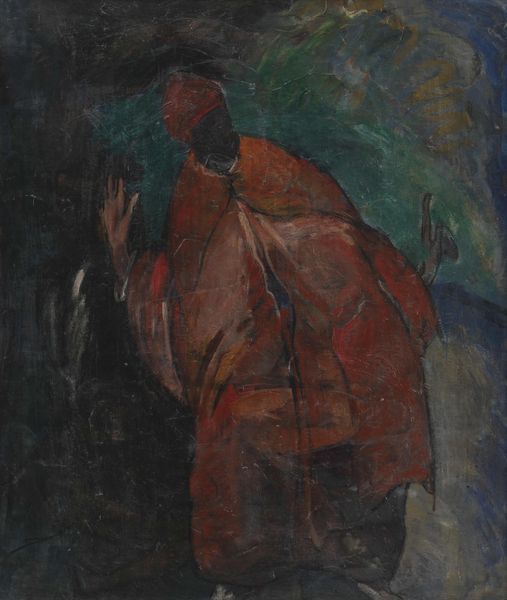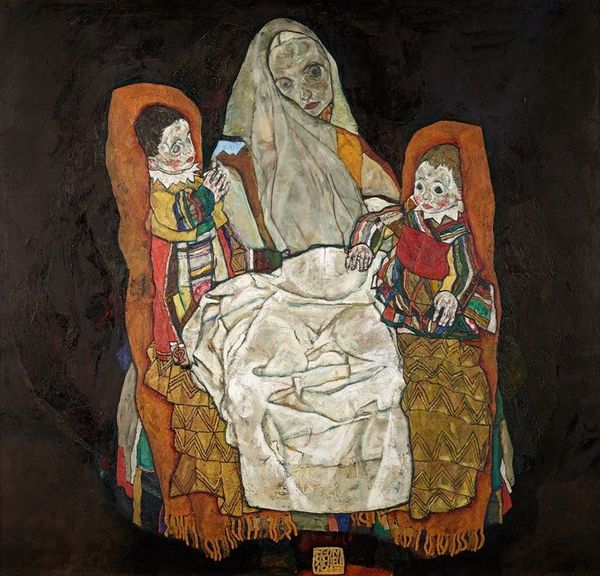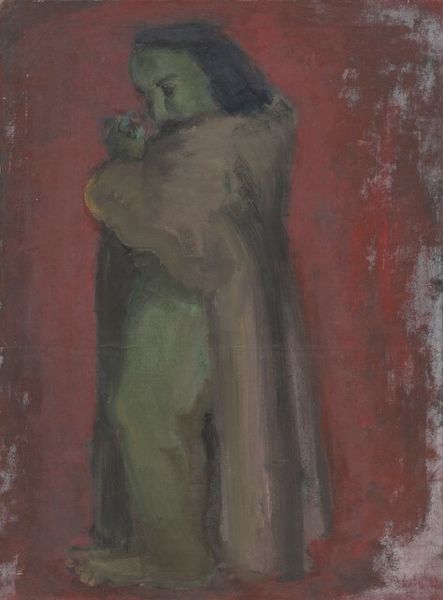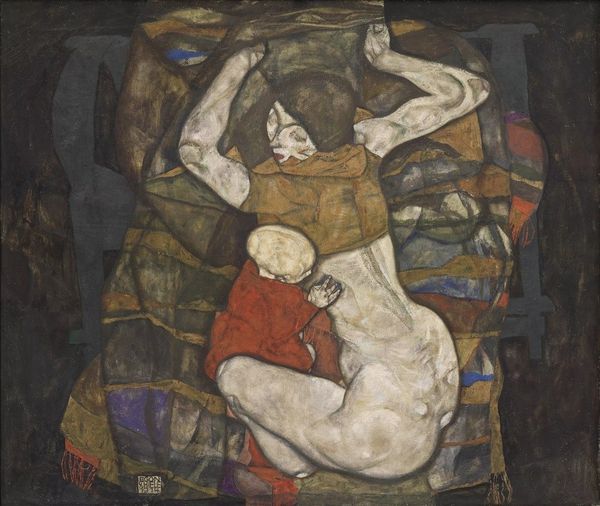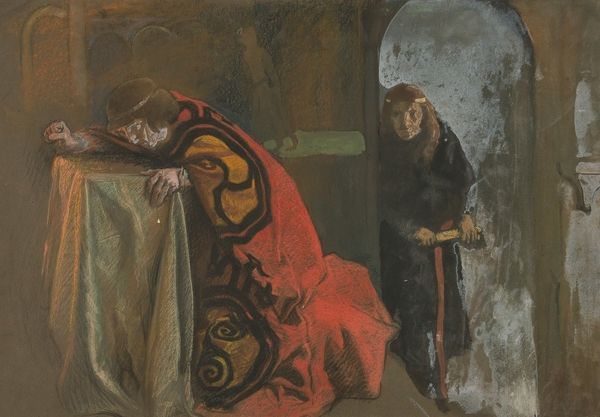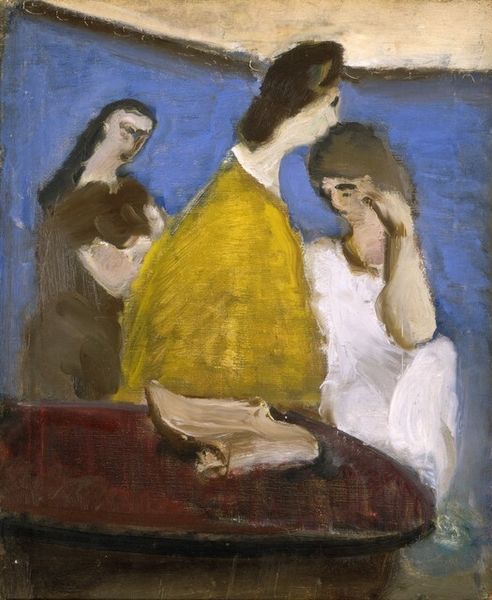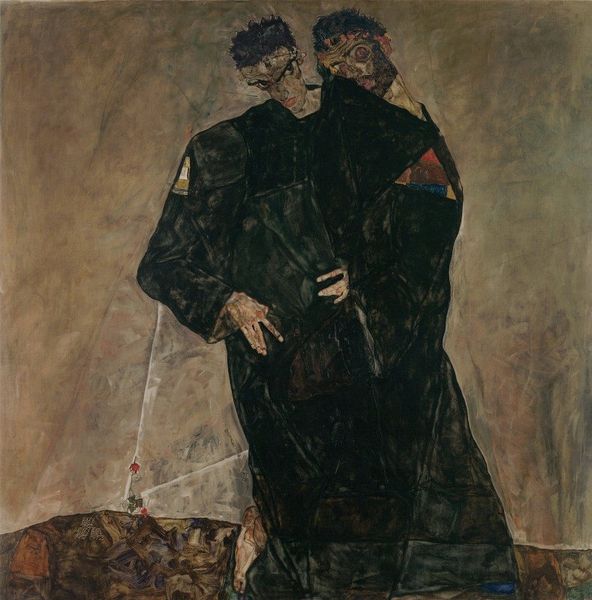
painting, oil-paint
#
painting
#
oil-paint
#
painted
#
figuration
#
oil painting
#
expressionism
#
symbolism
Copyright: Public Domain: Artvee
Editor: Egon Schiele's 1912 oil painting, "Cardinal and Nun," is intense. The colors are striking and unsettling all at once. What hidden stories or messages do you see embedded within its layers? Curator: Ah, a potent piece. Notice how Schiele uses religious figures to explore a forbidden, psychological landscape. What feeling do you get from the nun's face being partially obscured? Editor: She looks afraid, trapped almost, as if she's being silenced. Curator: Precisely! This covering resonates with traditional symbols of chastity and suppression. Schiele often utilized gestures to portray complex inner states. Do you observe how the cardinal's hand hovers, almost protectively or possessively, a mirror to hers? What contrasting message are they sending? Editor: It seems ambiguous…he's comforting her, or maybe complicit in something. The way he shields his mouth could suggest a secret. The bodies beneath them are so unsettling, like a dream or a nightmare. Curator: Exactly. The ambiguous symbolism invites us to explore themes of guilt, desire, and the hypocrisies within societal structures, right? Consider the history of such institutions. What kind of shared stories may be told and untold in the painting? Editor: This makes me consider how Schiele is using potent figures from the church, but the symbol's conventional interpretations collapse as it confronts an ambiguous space between truth, morality, desire, and social construct. I can’t unsee that perspective now. Curator: And through Schiele’s bold expressions of the body in these religious figures, the painting challenges and compels viewers to reflect on their own interpretations of faith, repression, and truth.
Comments
No comments
Be the first to comment and join the conversation on the ultimate creative platform.
